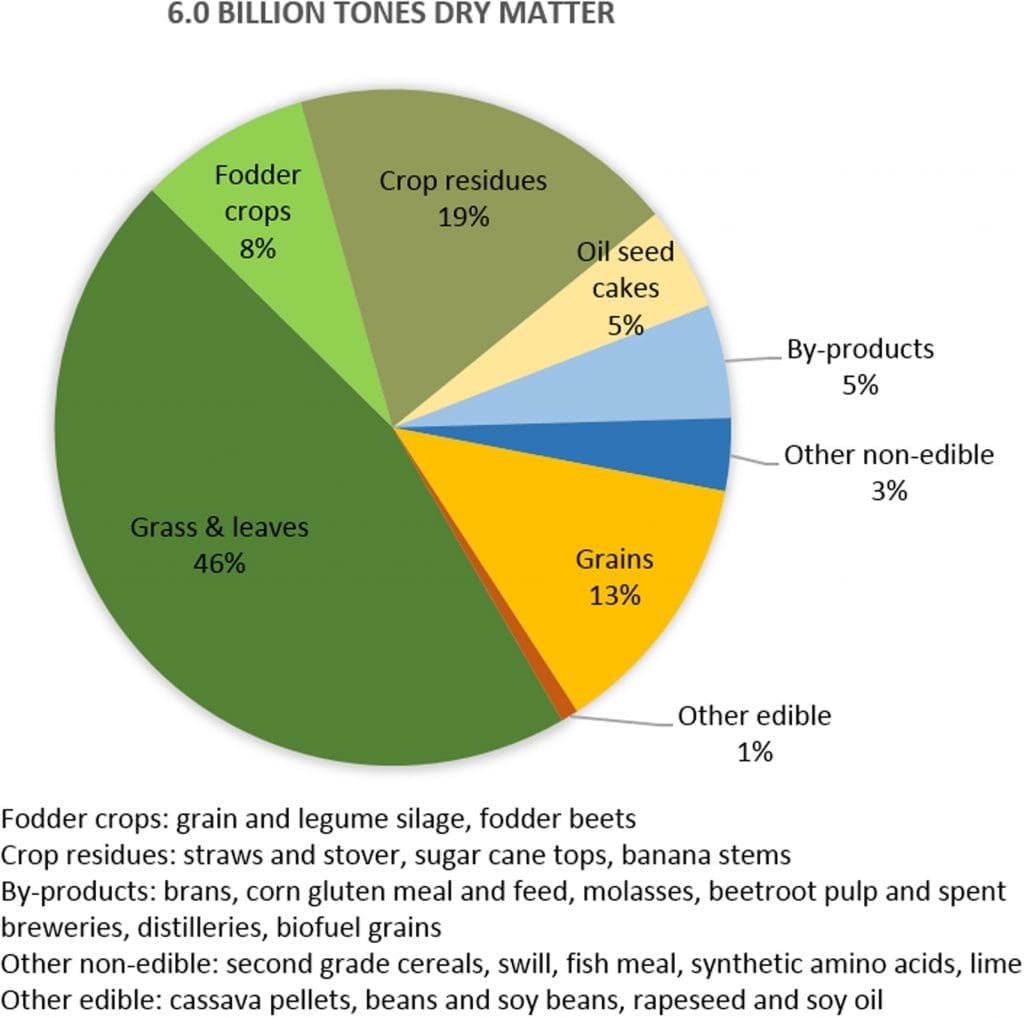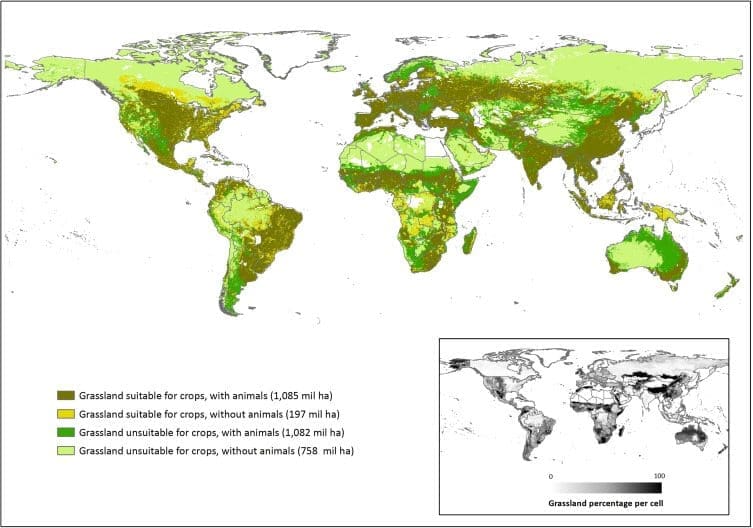LIVESTOCK consume about 6 billion tonnes dry matter as feed per year, of which 86 percent is made of materials that are currently not eaten by humans.
This is the headline result of a new study by the United Nation’s Food and Agriculture Organisation which demonstrates livestock place less of a burden on the human supply chain than previously reported.
In fact, some livestock production systems strengthen global food security because they provide more highly valuable nutrients for humans, such as protein, than they consume.
The study, titled Livestock: On our plates or eating at our table? A new analysis of the feed/food debate, was undertaken by members of the United Nation’s Food and Agriculture Organisation and Wageningen University in The Netherlands and was printed in the most recent edition of the Global Food Security Journal.
The findings are in direct contrast to commonly repeated claims that livestock are a drain on resources, requiring a large amount of feed that could otherwise be used by humans to produce a small amount of meat.
“As a Livestock Policy Officer working for the Food and Agriculture Organization (FAO) of the United Nations, I have been asked many times by the press to report on the negative environmental impacts of livestock,” explained lead investigator Anne Mottet, PhD.
‘People are continually exposed to incorrect information that is repeated without being challenged..’
“Doing so, I came to realise that people are continually exposed to incorrect information that is repeated without being challenged, in particular about livestock feed.
“There is currently no official and complete international database on what livestock eat. This study contributes to filling this gap and to provide peer-reviewed evidence to better inform policy makers and the public.”
In 2015 alone, approximately 800 million people around the world were undernourished.
Animal food sources made a vital contribution to global nutrition and provided an source of macro- and micronutrients, Dr Mottet said.
Meat makes up 18 percent of global calories and 25 percent of global protein consumption and provides essential micro-nutrients, such as vitamin B12, iron, and calcium.
Livestock use large areas of pastures where nothing else could be produced, she said.
Animals also add to agricultural production through manure production and draught power.
Further, tending livestock provided a secure source of income for people in many in rural areas.
However, despite these benefits, raising livestock was often pointed to as an inefficient system because animals consume food that could potentially be eaten by people.
Some previous studies, often cited, put the consumption of grain needed to raise 1kg of beef between 6kg and 20kg.
Contrary to these high estimates, the current investigation found that an average of only 3kg of cereals are needed to produce 1kg of meat.
Cattle relying on grazing and forages need only 0.6 kg of protein from human food to produce 1kg of protein in milk and meat, which is of higher nutritional quality.
“The media often reports how consumers’ choices can contribute to sustainable development, like through a vegetarian diet; however, erroneous information is provided regarding livestock feed requirements,” noted Dr. Mottet.
“We hear statements, for example, that to produce 1kg of beef, we need large amounts of cereals. While we need to ensure that our diets are sustainable from a health and environmental point of view, the public and decision makers need accurate information to guide their choices.”
“Animal production, in its many forms, plays an integral role in the food system, making use of marginal lands, turning co-products into edible goods, contributing to crop productivity and turning edible crops into highly nutritious, protein-rich food,” Dr Mottet said.
“Quantifying the land and biomass resources engaged in livestock production and the food output they generate, but also improving our modelling capacity by including trends in consumer preferences, shifts in animal species, climate change impacts, and industrial processes to improve the human edibility of certain feed materials is arguably basic information needed as part of further research into the challenge of sustainably feeding 9.6 billion people by 2050.”
Extensive grazing ruminant systems are often criticised as having very low efficiency in terms of converting feed into meat.
“However, when expressed in terms of human-edible protein, those systems are efficient converters of vegetal protein into animal protein, better than industrial monogastric systems that consume less feed but larger amounts of human-edible feed and soybean cakes per unit of product.
“These results allow to nuance the severity of the feed/food competition that is often put forward.”
This paper also found modest yield improvements could significantly reduce projected further land expansion for feed production.
Critics of farmed animal production have often relied on an 11 year old study by the same organisation to underpin their claims livestock farming is bad for the planet.
The FAO’s 2006 “Livestock’s Long Shadow” report produced the often-cited conclusion that farmed livestock production is responsible for more greenhouse gas emissions than all the world’s cars, planes, trucks, ships and trains combined. That message is still widely reported as an accepted truth in many mainstream media articles today.
However the authors of that report later acknowledged their conclusion unfairly attributed all direct and indirect greenhouse-gas emissions associated with meat production to farmed livestock, including fertiliser production, land clearing, methane emissions and vehicle use on farms, while the emissions they attributed to transport were limited to just the burning of fossil fuels.


